I wish life could be simple. Unfortunately, that’s not always the case. When it comes to Apple’s iPad lineup, which used to have just one model called the “iPad” back in the day, picking which one to buy has become a strangely entangled process.
Somewhere between every single model Apple offers is the perfect iPad, but it doesn’t currently exist in one single product.
That’s why I, as your reviewer guide, am having such a hard time with the review for Apple’s brand-new, redesigned 10th-gen iPad. Starting at $449 (£499, AU$749), it should be the iPad for everyone. But from what I’ve seen so far… it’s not. (This is a review in progress. As I use it more, I’ll weigh in with my final opinion.)
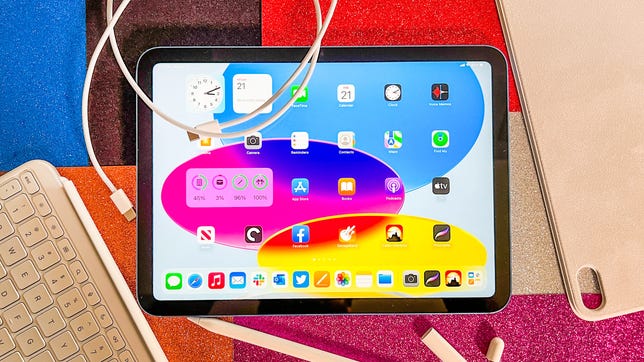
iPad (10th gen, 2022)
$449 at Amazon
Get Price Alerts
You’re receiving price alerts for iPad (10th gen, 2022)
Like
- Larger screen
- USB-C
- Faster A14 processor
- Front-facing camera’s in the right place
Don’t Like
- More expensive
- New design means fewer case options
- The 64GB entry-level storage isn’t enough
Maybe Apple already knows this, because the iPad lineup has six variants: 2022’s base model, last year’s ninth-gen iPad, the iPad Mini, the step-up iPad Air and the luxury iPad Pro, which comes in two sizes.
So which is the best one, you ask. “Stop talking about confusion, Scott, and help me.” This newly redesigned iPad nearly has it all: It has USB-C, finally! It has a bigger screen and better speakers, like the iPad Air. It’s the first iPad to move its camera to the horizontal edge for better FaceTime and Zoom calls.
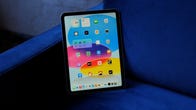

Now playing:
Watch this:
iPad 10th Gen and iPad Pro: Which iPad Should You Buy…
8:18
Then there are the downsides. If you want to use an Apple Pencil with this iPad, you have to use the first-gen one, which means using a weird USB-C dongle. It doesn’t work with iPad case accessories made for any other model, meaning you’ll have to buy new accessories. And the price has gone up. It’s $449 for the version with only 64GB of storage, but you’ll likely want the step-up model with more storage — 256GB for $599. And with any sort of case or AppleCare, you’re probably looking at well over $700. I haven’t even factored in a Pencil or Apple’s new $250 Magic Keyboard Folio Case.
In this economy, a better bet might be the ninth-gen iPad from 2021, which starts at $329, steps up to $479 for the higher storage tier and frequently can be found on sale. Apple took a similar approach to its latest MacBook Air: Increasing the price while adding features, but keeping the older model in the lineup.
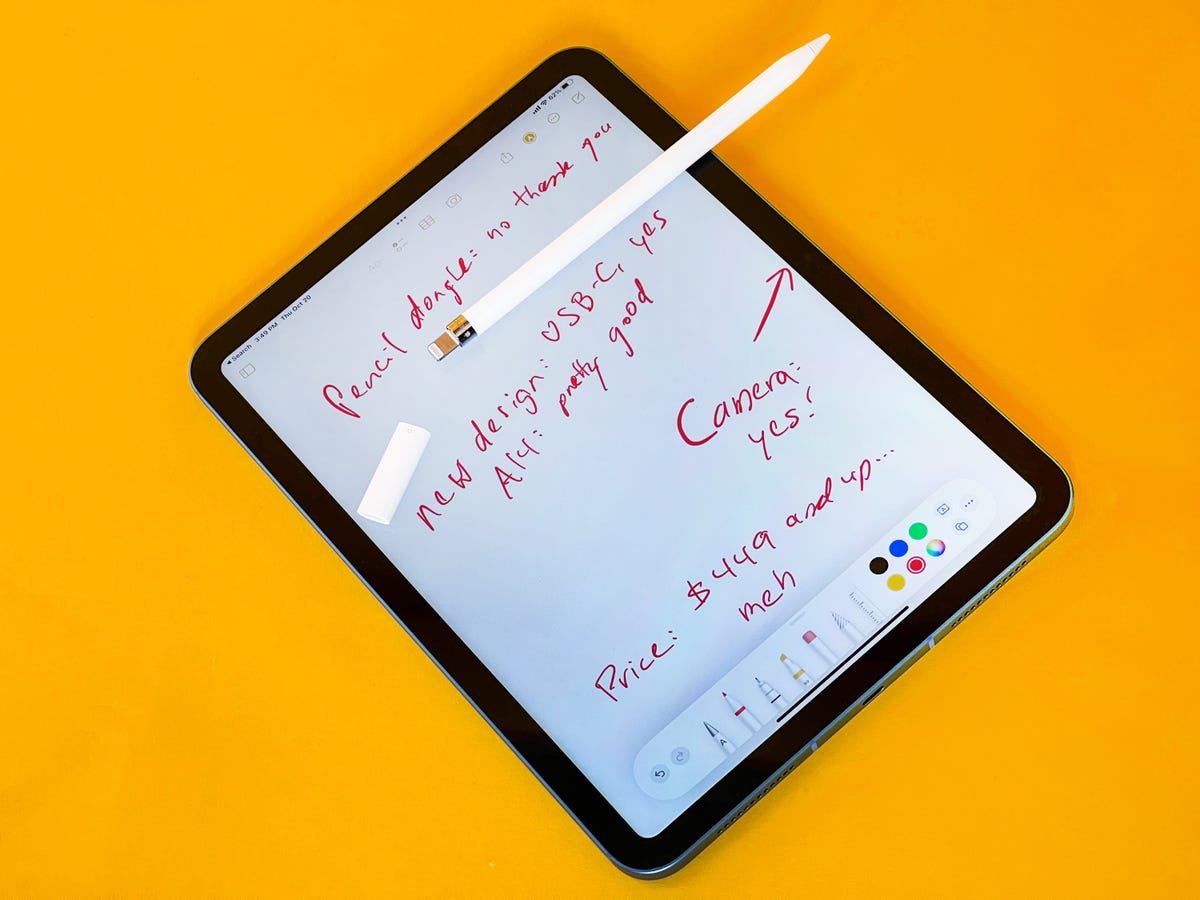

Scott Stein/CNET
And that’s a shame because this iPad, with its larger display, camera improvement and better processor, is the model I’d prefer — minus its weird Pencil accessory situation.
I don’t use the Apple Pencil much, despite how nice it is to draw with, so I might be OK with having to use the first-gen Pencil. But many other people won’t be. And it’s baffling, frankly, why Apple decided to not make this iPad compatible with the more useful Pencil 2 despite all of its other improvements. (You can even get 5G through the modem-enabled version.)
I’m going to unplug my Pencil 1 from its dongle now and rest it somewhere where it won’t roll off the table while I continue this iPad review.
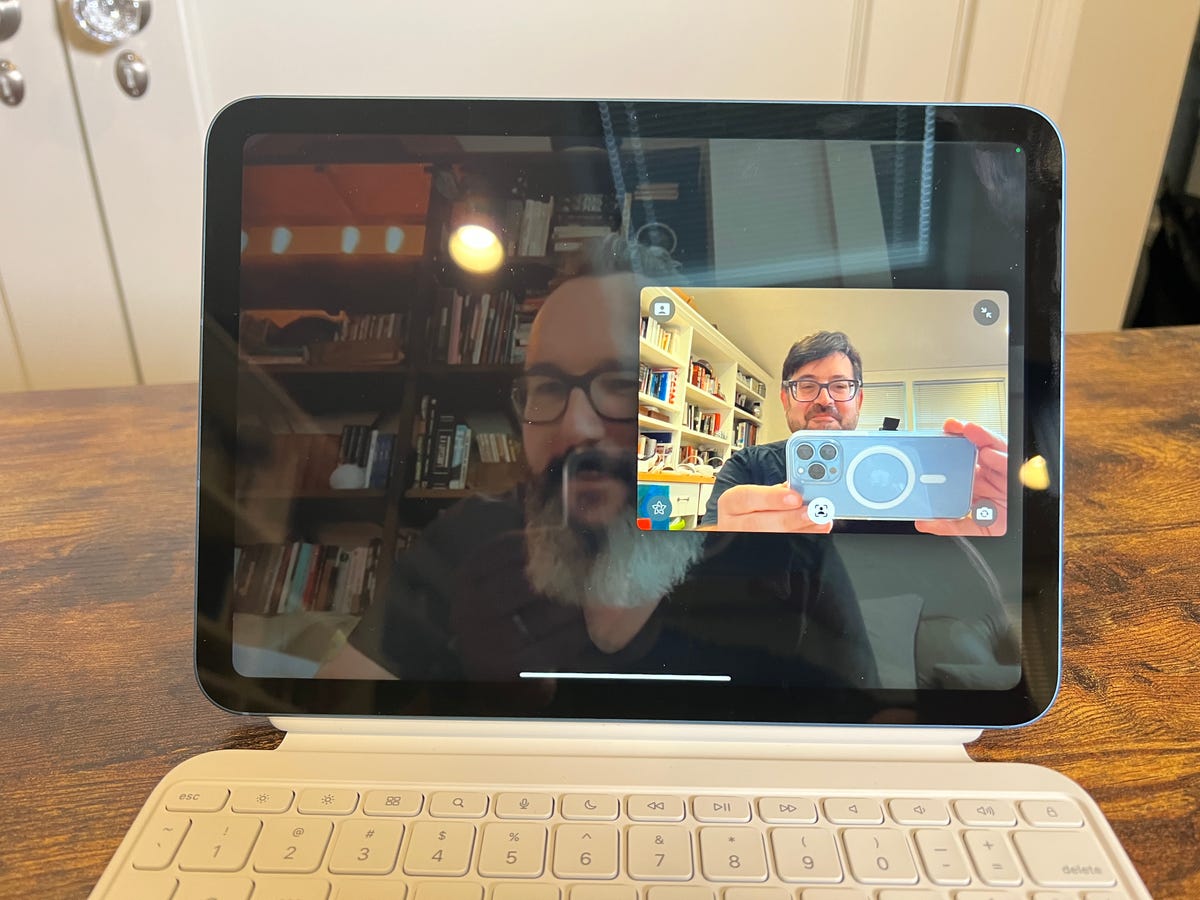

Me, celebrating that the camera finally looks great on a call with CNET’s Dan Ackerman.
Scott Stein/CNET
Camera: Yes, finally, it’s perfect
The one big thing I wanted from the iPad arrived, like a magic wish granted: The weirdly placed front camera on the iPad is now on the landscape edge. This is great. Why is this great? Because I work on iPads in landscape mode, in cases and stands and keyboard docks. When I Zoom or FaceTime on other iPads, my face looks weirdly off-angle with my eyes looking elsewhere. That’s fixed now. Combined with the auto-zooming Center Stage tech, this iPad’s video chat camera is absolutely perfect.
This, alone, makes me want to use this iPad more than any other. But, alas, Apple’s only moved the camera’s position for this iPad. No other model, not even the new iPad Pros, have it. Why? I have no idea. This is clearly the future of camera placement, so you’re one step ahead if you buy this model.
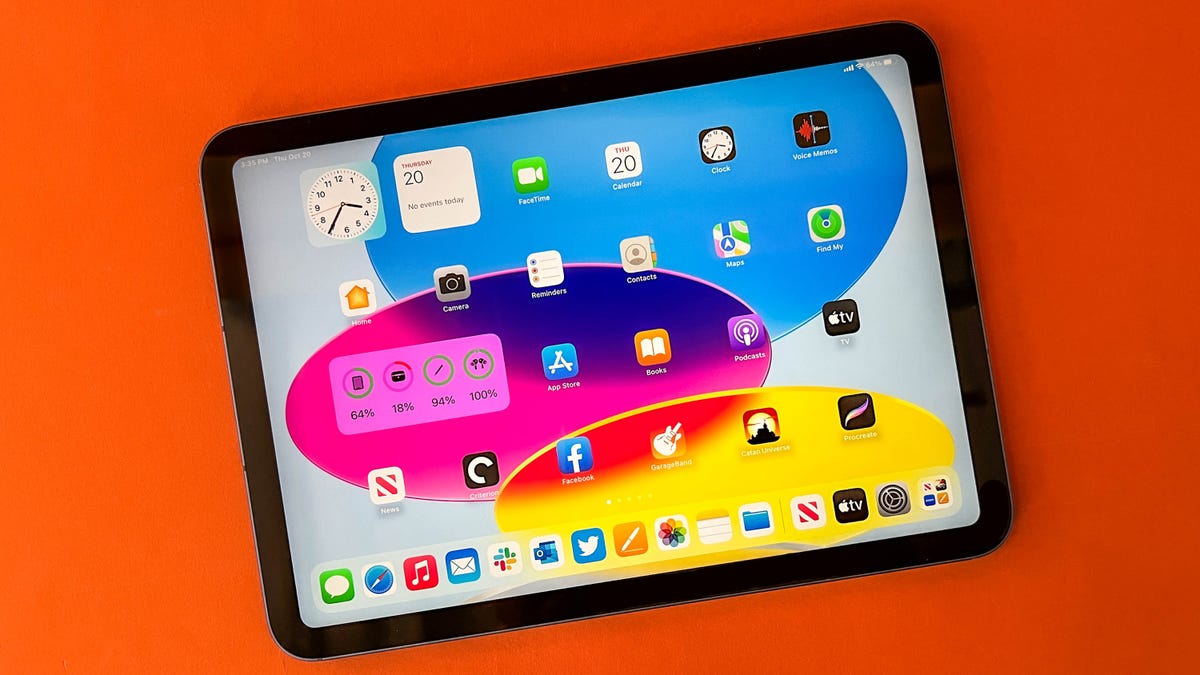

This iPad adopts the look of the iPad Air and iPad Pro. It’s mostly great.
Scott Stein/CNET
Design: Mostly better, but not always
This iPad has adopted the design style of all other iPads at last, with USB-C charging replacing Lightning and a flat-edged case with a larger, curved-corner 10.9-inch display. This iPad has better speakers than the ninth-gen model, and the display feels notably bigger. The display lacks the anti-reflective coating and extra color gamut of the iPad Air.
It doesn’t have the smooth-scrolling 120Hz ProMotion on the iPad Pro models, but it’s more than good enough for basically anything. Often, I had a hard time telling the difference between the iPad Air and this iPad in everyday use.
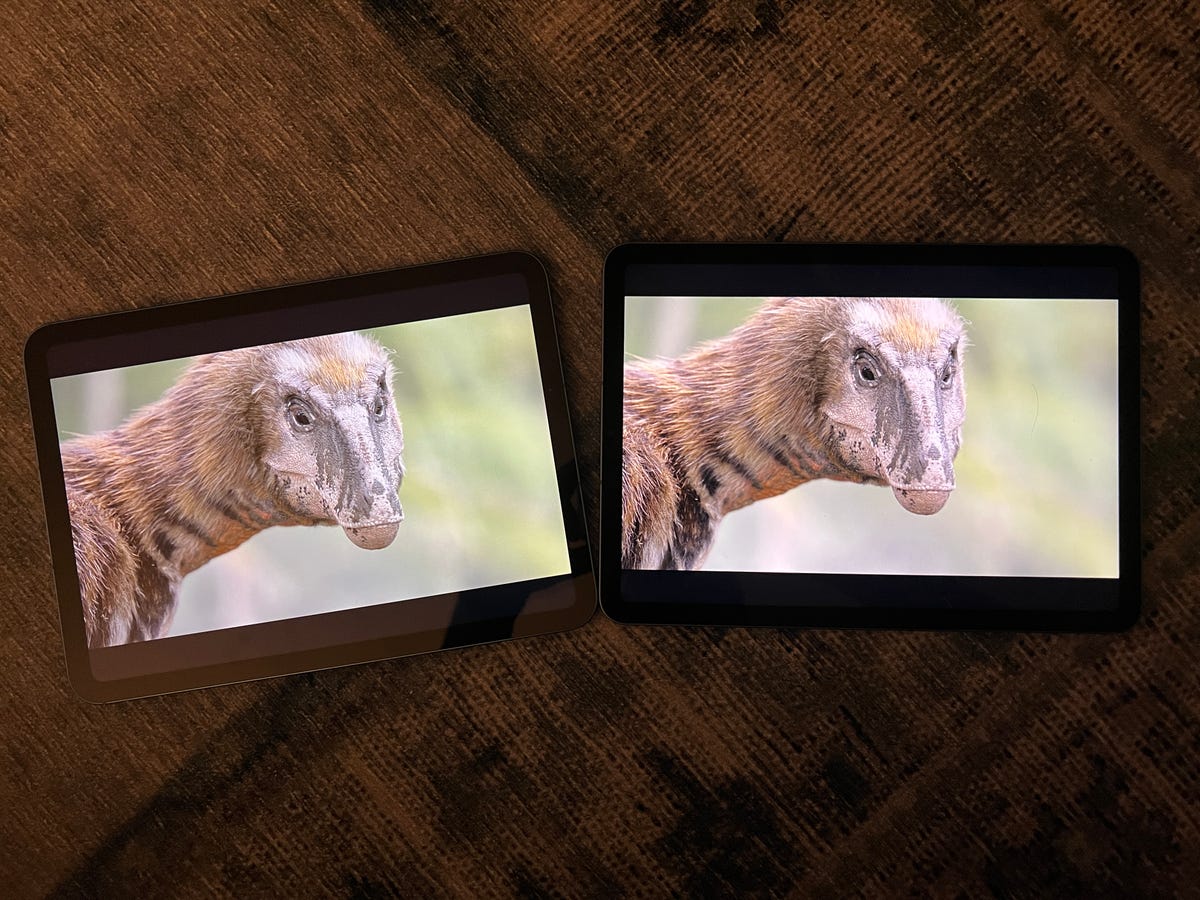

The 10th-gen iPad (left) next to the iPad Air (right), watching Prehistoric Planet. My family had a hard time telling the difference.
Scott Stein/CNET
This iPad is, effectively, the 2020 iPad Air minus a few features. The Air had the same A14 processor, but also supported the Pencil 2. It also had a rear Smart Connector that supported the Magic Keyboard case.
There’s no home button anymore, with Touch ID moving to the small side-placed power button, which the iPad Mini and iPad Air also have. I love this and wish the iPhones had it, too. There’s no Face ID camera, which is fine, because I wear a mask a lot anyway and Touch ID has been more convenient lately.
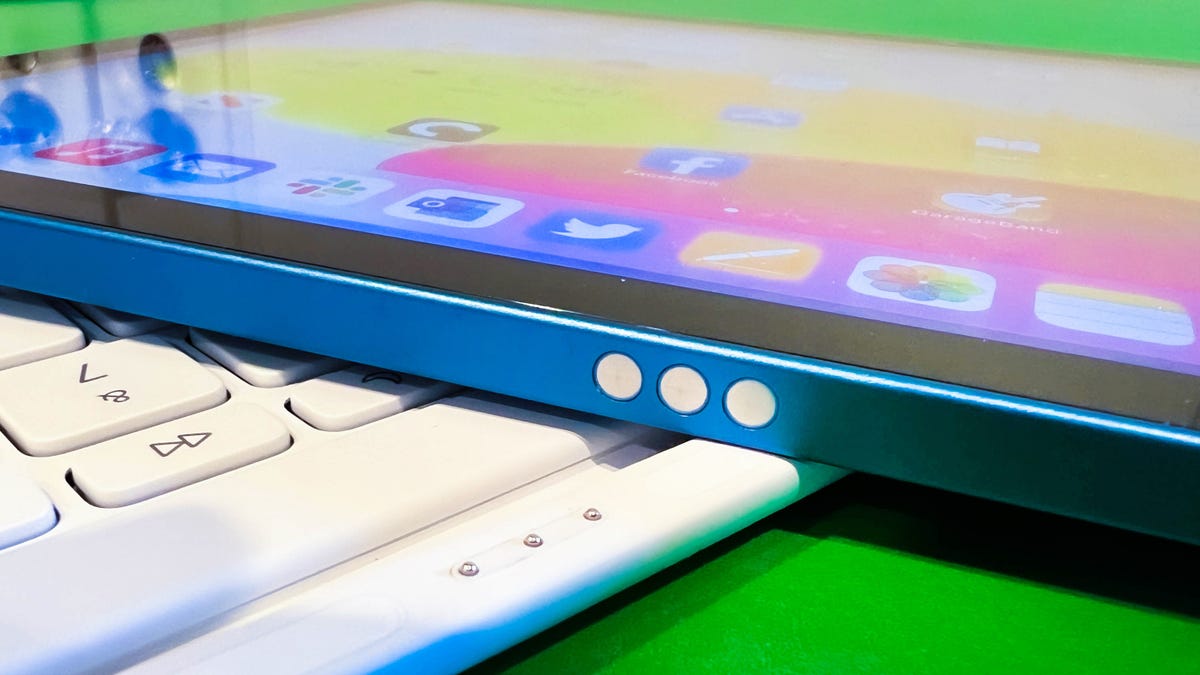

The new location of the Smart Connector: on the side.
Scott Stein/CNET
The downside to the design is it’s a bit thicker than the current 11-inch iPad Pro and iPad Air, meaning this won’t work with any of those cases. This means shopping for all-new accessories. Apple also created a differently placed Smart Connector on the side edge, which works with Apple’s iPad-made Keyboard Folio Case. More on that below.
I asked my 14-year-old son, who uses an iPad all the time, what he thought of it. He said, “I don’t care, it looks the same.”
But there’s one thing about this iPad’s design I can’t stand.
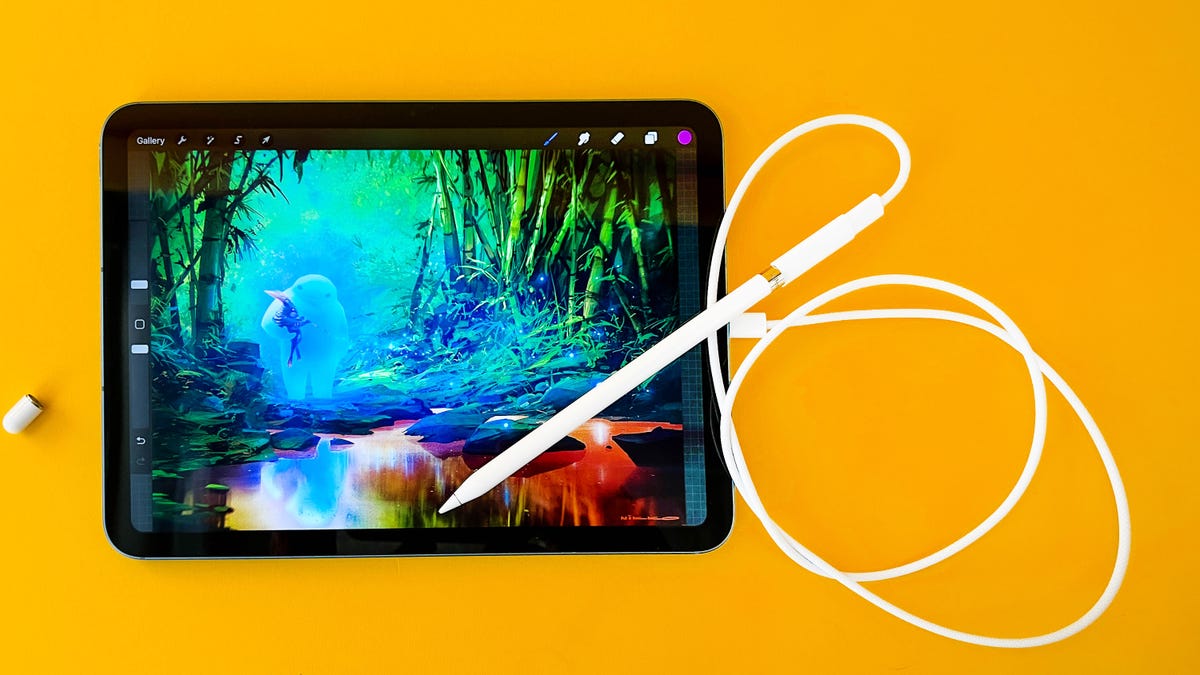

This is how you attach the Pencil now.
Scott Stein/CNET
Pencil: Really?
The best thing I can say about this iPad is it works with the Apple Pencil, but I think that’s almost on a technicality. Apple skipped support for the magnetically charging snap-on Pencil 2 with this model, so you’ll need to use the Pencil 1 — which rolls a lot, has an easy-to-lose end cap, doesn’t have extra side-tap controls and charges via Lightning.
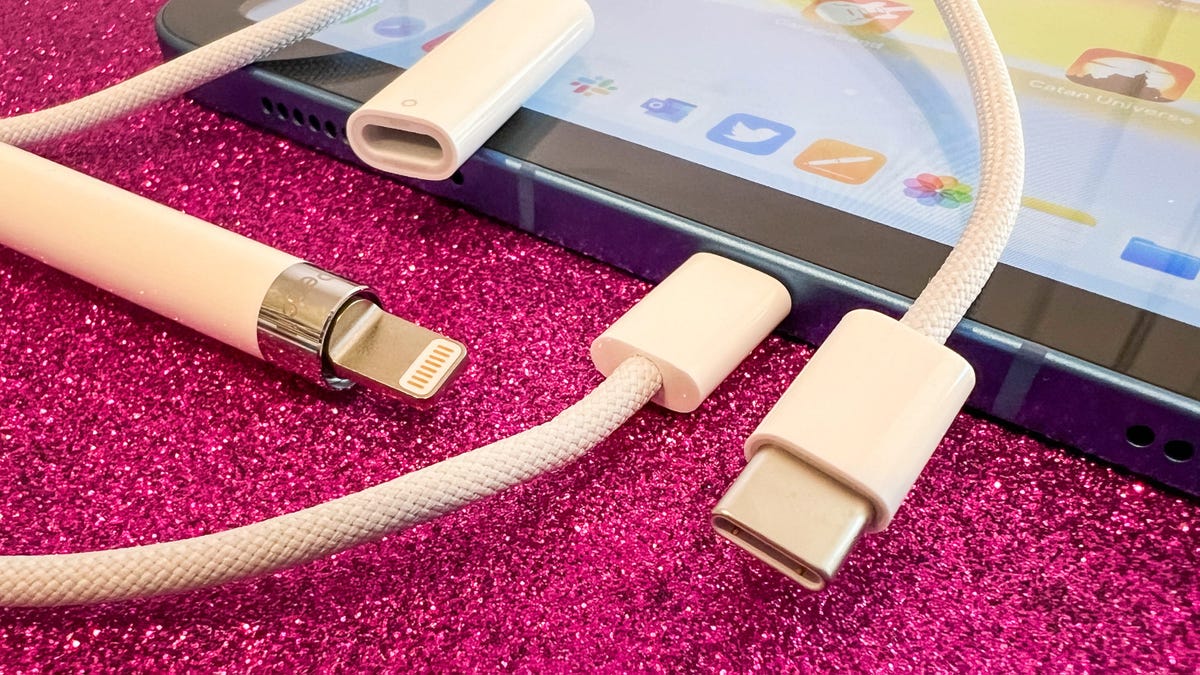

It’s a lot of connectors. Also, that Pencil-to-USB dongle is not included in the iPad box.
Scott Stein/CNET
Except instead of plugging the Pencil into the side of the iPad to charge, you’ll need a separate USB-C dongle and the charge cable to charge it. Not only is that weird, it’s frustrating. The odds I’ll bring all that stuff with me when I need it are slim. If you’re serious about making art on an iPad using the Apple Pencil, this bizarre move is bad enough to skip this model entirely. (Even the iPad Mini works with the Pencil 2, come on.)
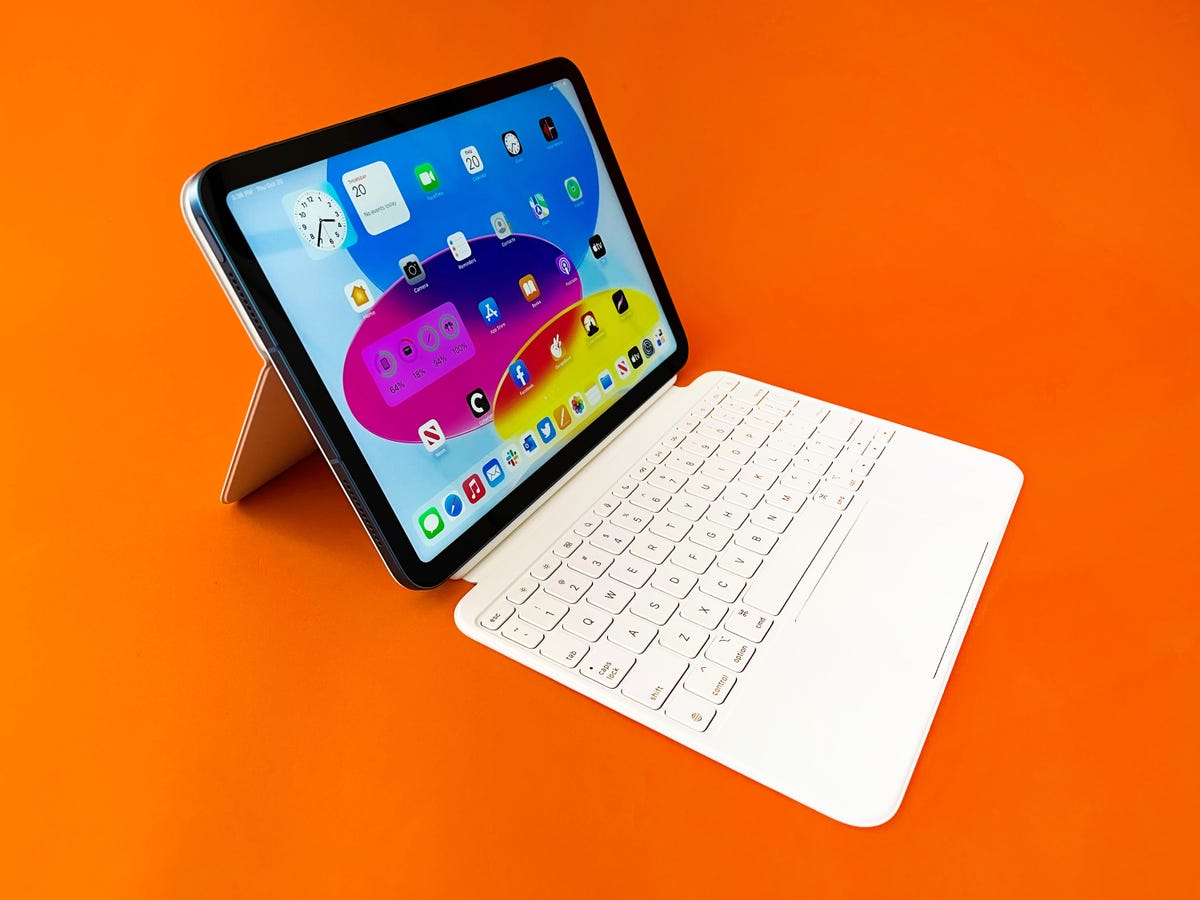

Apple’s new Magic Keyboard Folio has a look similar to previous Logitech cases.
Scott Stein/CNET
Magic Keyboard folio case: An imperfect solution
Apple redesigned its keyboard-connected case yet again for this new iPad, taking an approach that feels a lot different than its Magic Keyboard case. That case, which works with the iPad Air and Pro, is expensive ($300 and up), heavy, can’t be used as an everyday case because of its inflexible angles, but is excellent for working on small work surfaces or laps.
The folio case is still expensive at $250. It’s split into two parts (a keyboard that snaps on the side and a kickstand back cover that snaps to the iPad back), can be used as an everyday case and adds a helpful row of function keys on the top. But it isn’t lap-friendly and lacks keyboard backlighting. I wrote this whole review on it, but I edited and posted it on a MacBook Air.
I’ve used keyboard cases by Logitech and others, and the Surface Pro has a similar keyboard design. You can get Logitech’s cases for less, and they offer better protection: Apple’s case doesn’t protect the iPad’s sides at all, and it looks ready to pop off if you ever drop the iPad. The keys feel a little different to me than the other Magic Keyboards or my MacBook Air. I don’t like it quite as much.
Also, there’s no place to put the Apple Pencil. Which, last I checked, was rolling around somewhere.
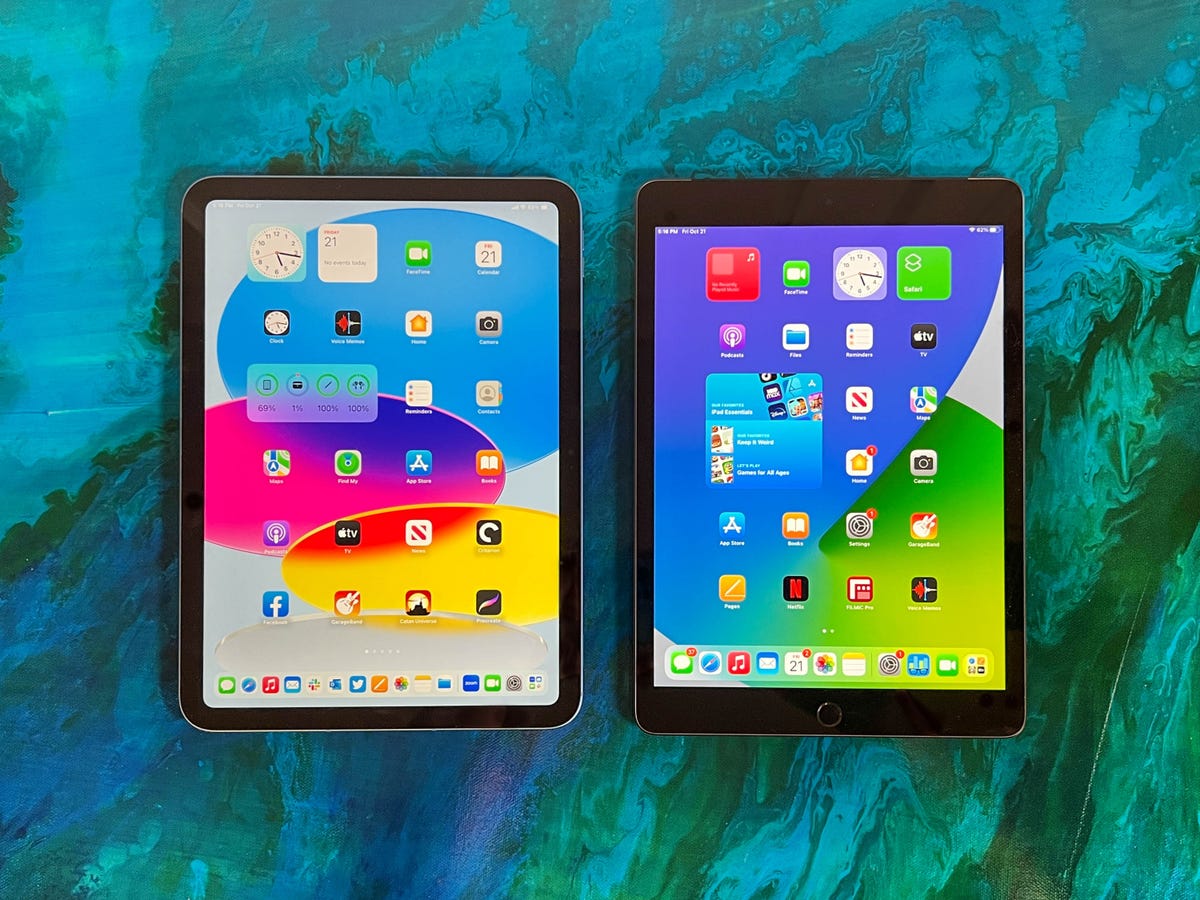

The iPad 10th Gen (left) next to the iPad 9th Gen (right). The new iPad has a better A14 processor: not as fast as M1, but good enough. (The ninth-gen iPad is still fine too, though).
Scott Stein/CNET
Performance: More than good enough
The A14 processor has been around for a while (it was on the iPhone 12). Here it comes with 4GB of RAM, similar to the iPhone 12 and 2020 iPad Air. The results are good: More than fast, but it’s not as blazing as the M1 in the Air or the M2 in the new Pro.
Do you need bleeding-edge iPad performance? I don’t think so. The gains over last year’s ninth-gen iPad are significant, but no different than the iPad Air model from 2020. Apple’s mobile processors are now so powerful that the iPad software needs to catch up to their potential.
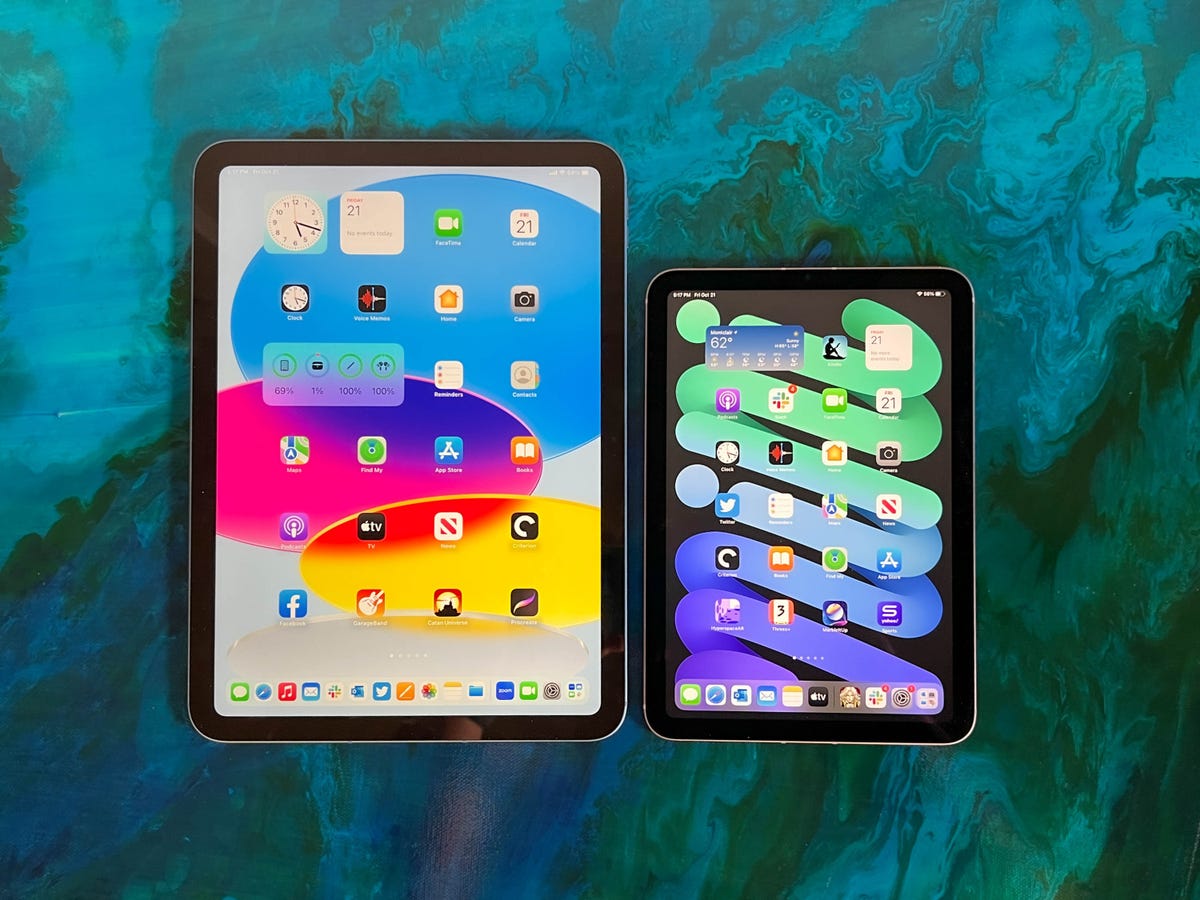

The iPad next to the iPad Mini. The family feels complete. but not all the features have come together.
Scott Stein/CNET
Should you wait? Maybe
Apple’s iPad lineup has been staggered lately: Base and Pro models arrive in the fall (sometimes) and the Air model comes in the spring (sometimes). Last spring’s iPad Air has slight improvements over this iPad, with an M1 chip, subtly better display and Pencil 2 support. But it doesn’t have this newly fixed front camera. The same thing happened last year when the entry-level iPad added Center Stage zoom while the iPad Air was left without it.
The iPad Air costs $150 more and could be tempting. Apple keeps its upgrade increments just within reach, like sizes of popcorn at a movie theater. Suddenly, you’ll find yourself entering iPad Pro land, and a thousand dollar-plus package. Pull back and ask yourself: Will this model go on sale? Would you be happy with last year’s iPad instead? Would you rather see if something better for the Air comes next spring?
The only thing that concerns me for future upgrades is that Apple’s leaning on its M1 chips as the cutoff for more advanced software features, although right now that mostly just means better external monitor support with Stage Manager, a feature that’s currently so buggy Apple’s delayed the release to later this year. I’d say you’re fine without the M1, especially since the A14 is more than good enough.
Down the road, having an old Pencil and a sub-M1 chip could leave this iPad on the other side of the future. Then again, you’ll be saving money. Apple hasn’t made this iPad lineup easy this year. It feels like the iPad is a product still in transformation. Right now, its perfect form doesn’t exist.




